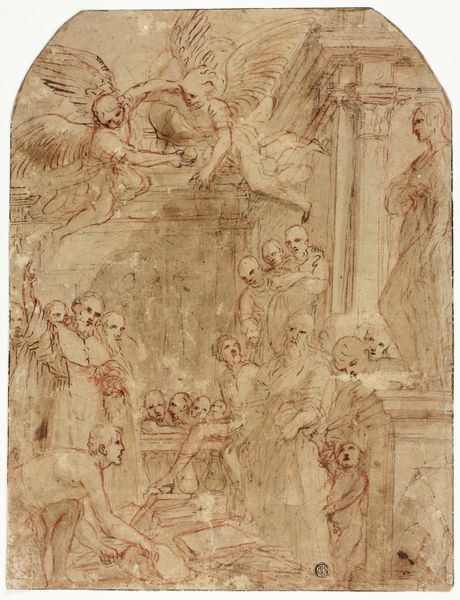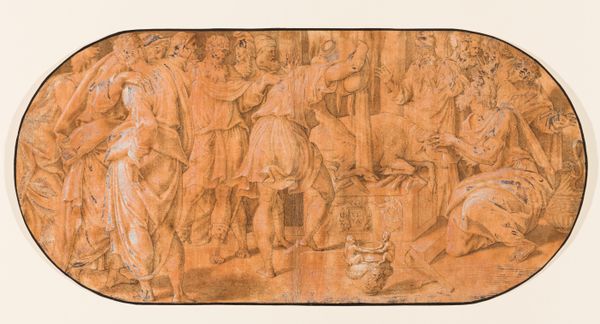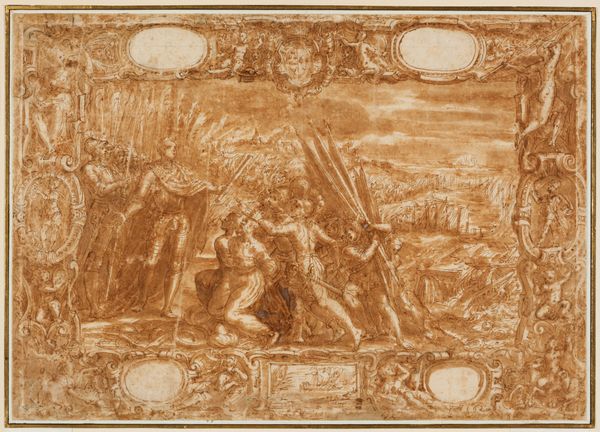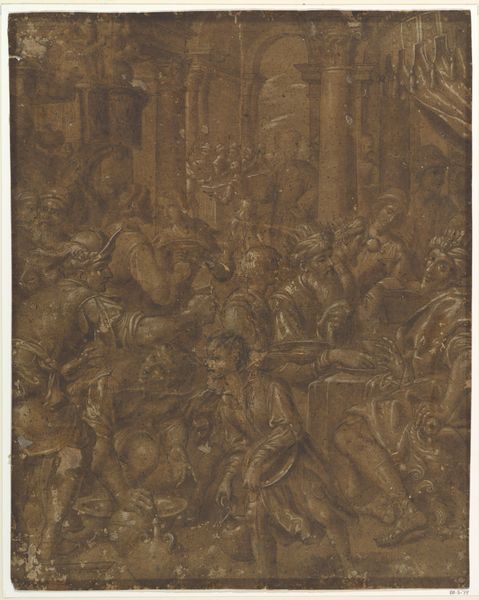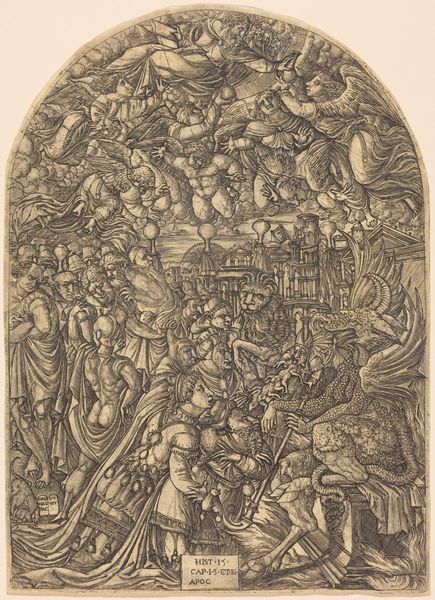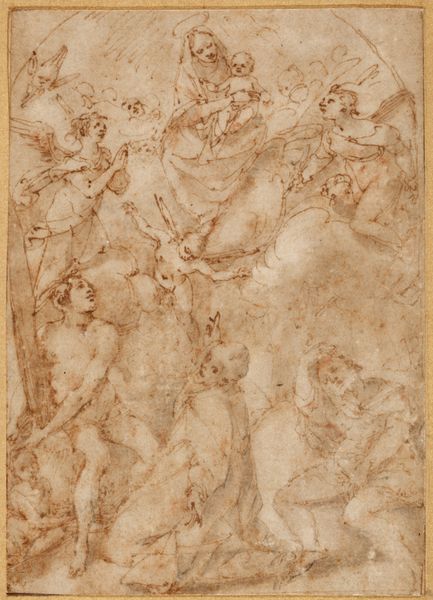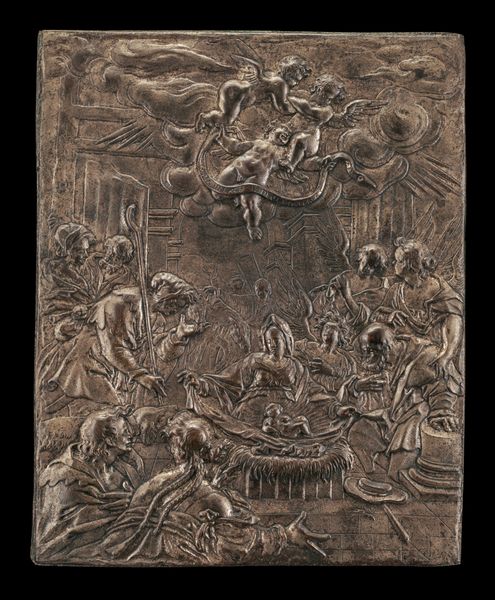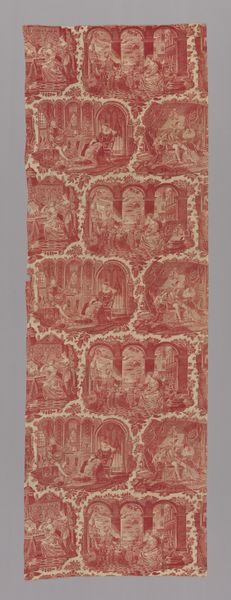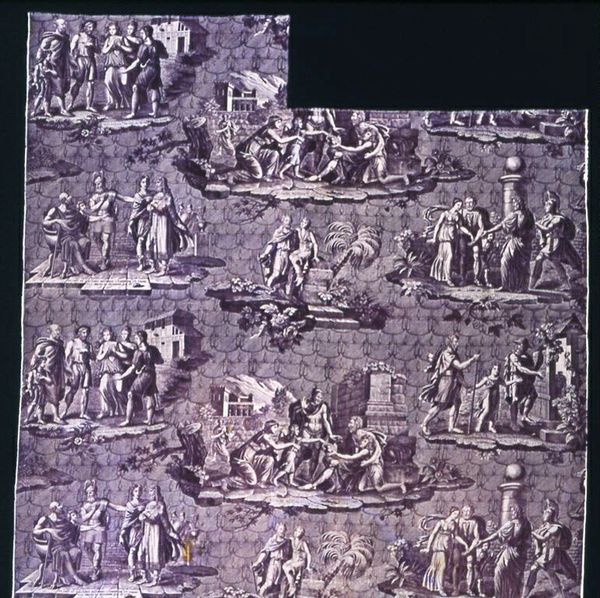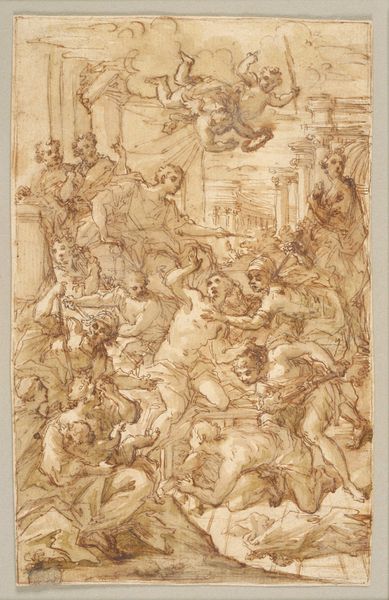
textile, cotton
#
natural stone pattern
#
naturalistic pattern
#
textile
#
geometric pattern
#
abstract pattern
#
organic pattern
#
france
#
wooden texture
#
pattern repetition
#
cotton
#
natural texture
#
layered pattern
#
organic texture
Dimensions: 56 1/2 x 31 3/4 in. (143.51 x 80.65 cm)
Copyright: Public Domain
Curator: It looks like we have before us a printed cotton textile entitled "Joan of Arc Panel," dating back to approximately 1815. It’s currently housed here at the Minneapolis Institute of Art. Editor: Oh, wow, what a dizzying display! A sort of earthy crimson wash overlaid with delicate, almost ghostly vignettes. The whole piece shimmers with contained drama, doesn’t it? It makes me feel like I am peering into the past, trying to make sense of faded memories and grand narratives at once. Curator: Indeed. The textile's repeating pattern presents episodes from the life of Joan of Arc, the iconic French heroine. Textiles like these played a significant role in disseminating historical and cultural narratives during the early 19th century. Editor: And it’s so French, right? Very storybook, romantic but tinged with something heavier. Look at the detail they were able to achieve! You see this narrative repeated and mirrored… what does that layering do to our understanding? It becomes an echo, a ghost that repeats into infinity. Curator: It serves to elevate the legend, certainly. The use of Toile de Jouy, the printed cotton in monochromatic color, frequently red, adds a layer of sophistication while narrating folklore through detailed figural compositions in pastoral settings, further mythologizing Joan's journey in the cultural consciousness. Note the careful placement of architectural elements too – towers and fortified gates serve as spatial markers in this play-within-print. Editor: There's a potent tension between domesticity and war… The soft medium contrasts dramatically with Joan’s life. Isn’t that odd? We encounter her not in armor but on a soft woven material fit for curtains. This intimacy grants the heroine a humanity easily glossed over in history books. How often do we cozy up to history like this? Curator: Quite right. It offers a powerful, domesticated avenue for national myth-making. Such panels would’ve been displayed in homes across France, embedding these values in domestic spaces and the popular imagination. Editor: I really adore it! A quiet, subtle testament. Not at all the pomp and circumstance one would expect. More… whispered strength. What about you? Any lasting thoughts? Curator: It’s a compelling artifact, revealing much about how history becomes intertwined with cultural identity and artistic expression through accessible mediums, leaving lingering resonances.
Comments
minneapolisinstituteofart about 2 years ago
⋮
In the 15th century, a young, deeply religious French peasant girl named Joan of Arc heard “voices” that urged her to save her country from English and Burgundian aggressors. She led France’s troops in battle but was eventually captured and condemned by the English to burn at the stake. Illustrated here are five incidents in Joan of Arc’s life: Joan going into battle; her appearance before the king; leading Charles into Rouen; Joan repudiated by the King; Joan at the stake. Toward the end of the 18th century, French and English textile manufacturers mastered dye technology, enabling them to produce fine printed cotton textiles. Not only were these new textiles less expensive than costly Asian imports, but they featured distinctly European themes. Particularly popular images included scenes highlighting historic events, such as this one, depictions of well-known monuments and buildings, as well as traditional floral motifs. The practicality of a decorative textile, that could be easily cleaned, was particulary appealing and the cloth was used for everything from bed and window curtains to women’s dresses.
Join the conversation
Join millions of artists and users on Artera today and experience the ultimate creative platform.
